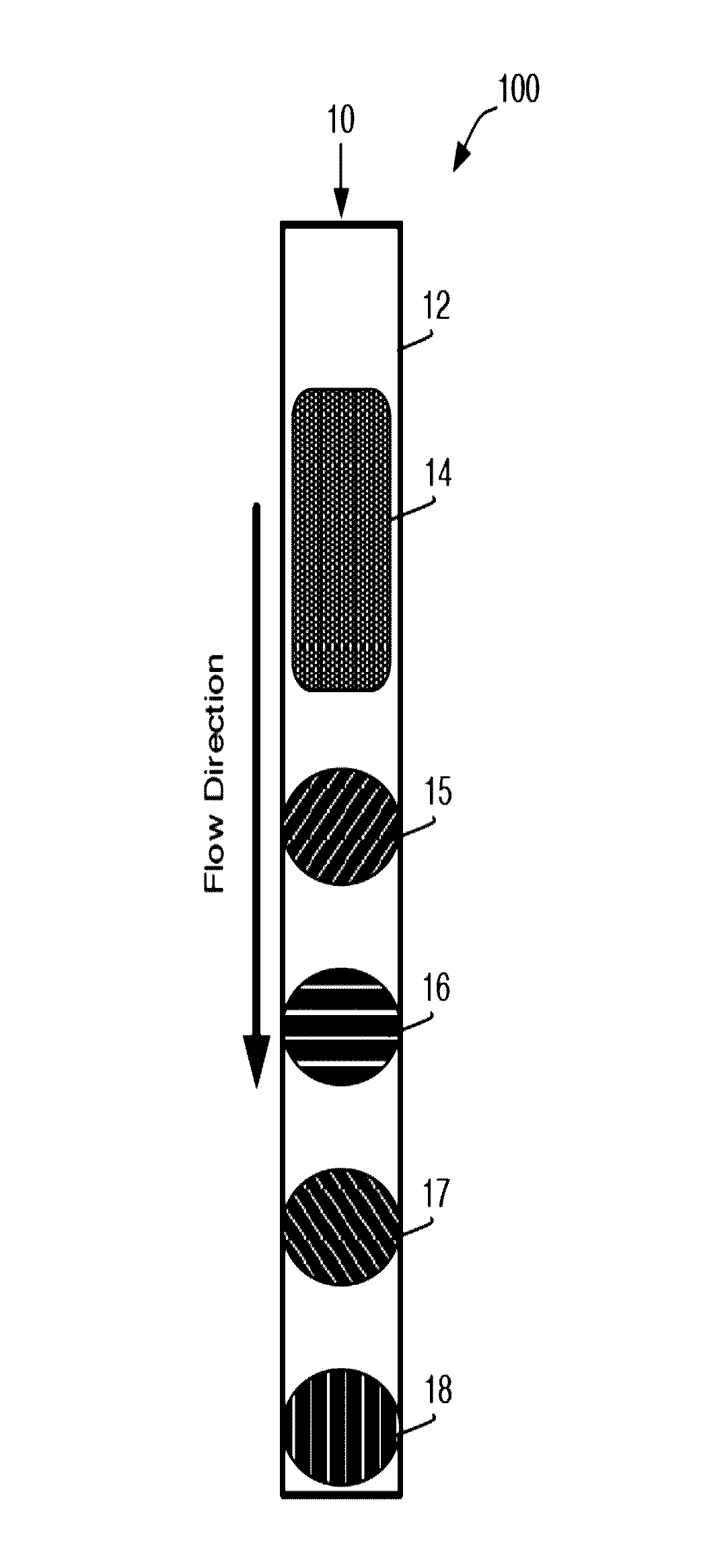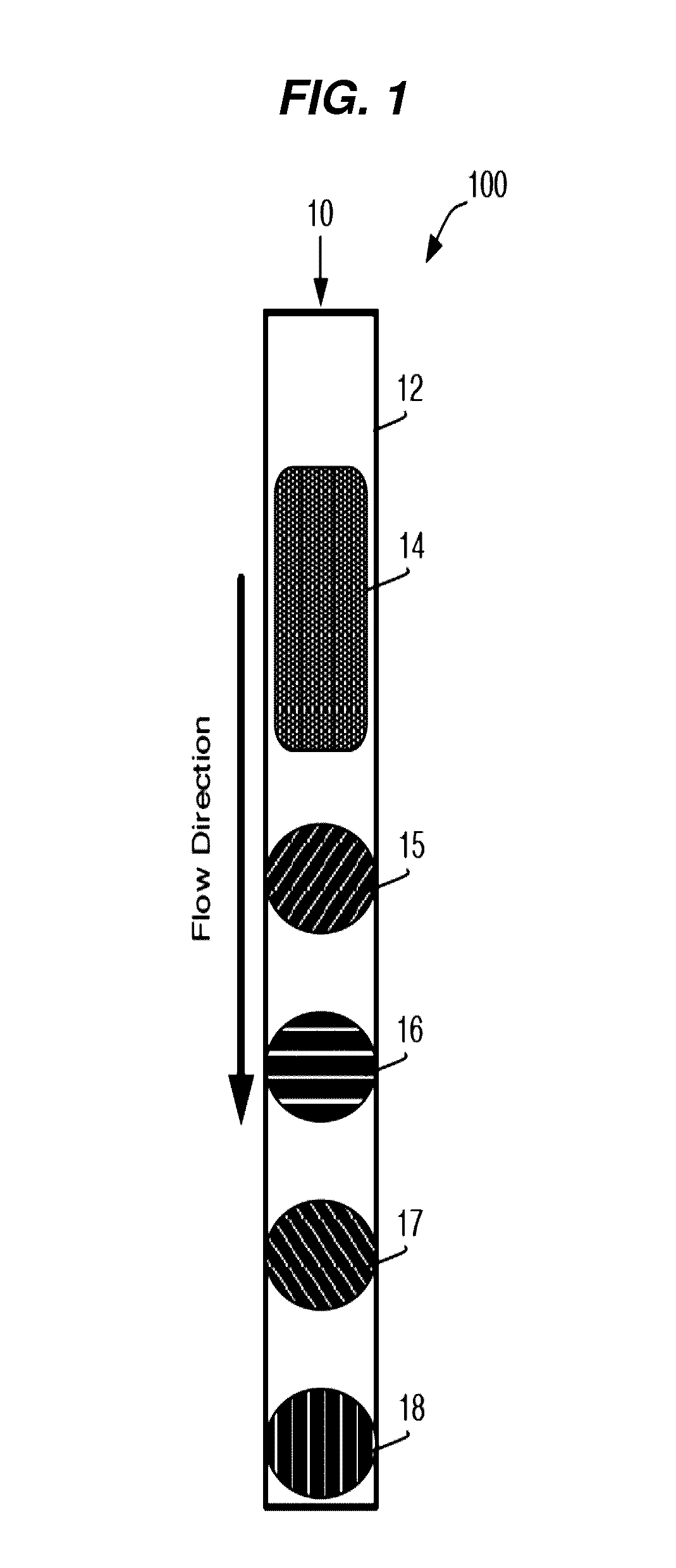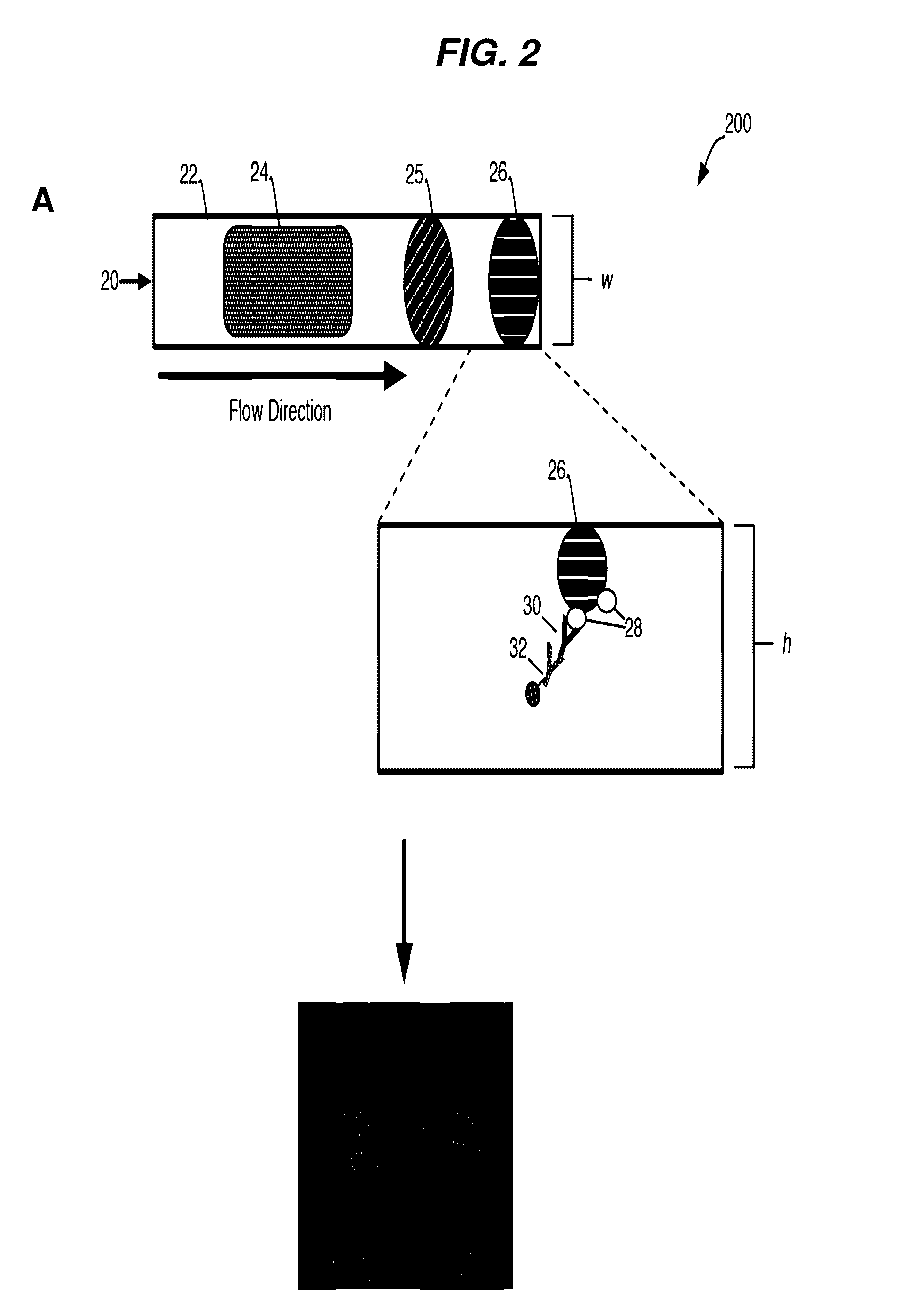Methods and systems for detecting an analyte in a sample
a technology of analyte detection and sample, applied in the field of methods and systems for detecting analyte in a sample, can solve the problems of limited evidence of real-world performance in real-world settings, unsuitable for higher throughput applications, and 40% of patients in such settings, so as to achieve accurate measurement of infectious disease markers and dramatically reduce the interference of sample solution
- Summary
- Abstract
- Description
- Claims
- Application Information
AI Technical Summary
Benefits of technology
Problems solved by technology
Method used
Image
Examples
example 1
Stably Associating Capture Beads with a Plastic Capillary Chamber
[0232]Capture beads coated with anti-mouse antibodies (BD CompBeads, BD Biosciences, San Jose, Calif.) were stably associated with a surface of a custom molded cycloolefin polymer plastic capillary chamber. To test the impact of bead properties, buffer properties, and capillary chamber surface chemistry on the ability of beads to adhere to the surface after fluid flows into the cartridge, a series of tests were performed.
[0233]The impact of the surface chemistry on the ability of the beads to adhere to a plastic surface under the given conditions was tested by attaching BD TruCount™ beads on plastic surfaces and flowing human plasma through the surface. Beads were imaged using a custom-built digital imaging system. The effect of bead properties on the ability of the capture beads to adhere to a plastic capillary chamber surface is depicted in FIG. 3, Panel B.
[0234]The effect of capillary chamber surface chemistry on th...
example 2
Detection of an Analyte in a Sample
[0235]A general schematic overview of the below experiments are presented in FIG. 2, Panels A-B. Capture beads (BD CompBeads, BD Biosciences, San Jose, Calif.) were stably associated with the upper surface of a capillary chamber, as described above in Example 1. The beads were coated with anti-mouse antibodies, such that the beads would capture any mouse antibodies in the sample. The beads were labeled with mouse anti-human antibody immobilized in a spot on the upper surface of the capillary chamber. The beads stayed localized in the spot by inherent, presumably passive, interactions between the beads and the plastic chamber surface.
[0236]The capillary channel was designed such that the channel height was less than about 10 times the diameter of the capture beads, with ideal performance observed when the channel height was about 3-5 times the diameter of the capture beads.
[0237]At such dimensions, the relative low channel height reduced the backgro...
PUM
| Property | Measurement | Unit |
|---|---|---|
| height | aaaaa | aaaaa |
| diameter | aaaaa | aaaaa |
| width | aaaaa | aaaaa |
Abstract
Description
Claims
Application Information
 Login to View More
Login to View More - R&D
- Intellectual Property
- Life Sciences
- Materials
- Tech Scout
- Unparalleled Data Quality
- Higher Quality Content
- 60% Fewer Hallucinations
Browse by: Latest US Patents, China's latest patents, Technical Efficacy Thesaurus, Application Domain, Technology Topic, Popular Technical Reports.
© 2025 PatSnap. All rights reserved.Legal|Privacy policy|Modern Slavery Act Transparency Statement|Sitemap|About US| Contact US: help@patsnap.com



